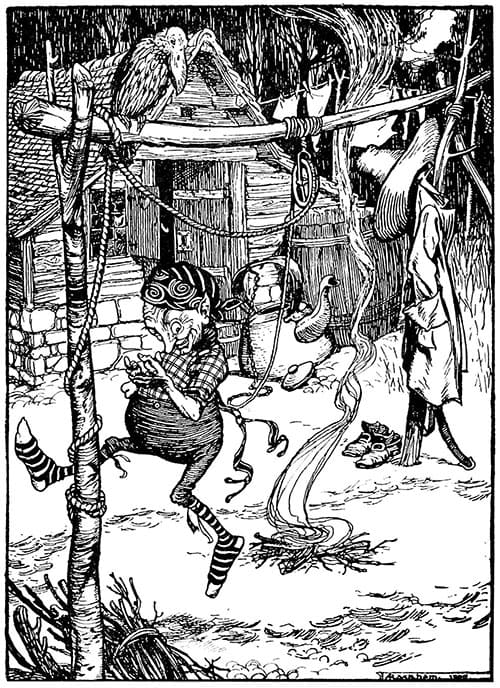More than two centuries passed since The Brothers Grimm collected the German folk tales and turned them into the foundation of Western European fables, and to the driving power behind the fairy tales of the modern western world (not without the help of one – Walt Disney). Just imagine your world of perception without Cinderella’s glass shoe, Snow White’s poisoned apple, or Hansel and Gretel’s Candy House. It is right to say that the fairy tale world did not stop with the death of the brothers in the mid-nineteenth century and that there is a whole world out there. But whenever you think the old fairy tales are not relevant to our day and era, remember two words: Little Red Riding Hood.
One of the fairytales collected by the brothers tells the tale of the miller’s daughter that was locked by a king so she could spin straw into gold because of her father’s careless mouth, and without the help of Rumpelstiltskin, her fate would have been dire.
In her latest book – Spinning Silver – Naomi Novik takes this story, dismembers it to its core foundations and build something that if we looked at it in a dark room while squinting our eyes, we might have traced some of the similarities. She herself mentions the original fairytale at the beginning of the book, but the version we get is somewhat different from the one we know from the Brother Grimm’s. The version the readers are exposed to is more or less the one that sets the tone, or might we say, the agenda of the story yet to come.

The protagonist of this book is Miryem, the daughter of a moneylender that decides to take over the family business after her father fails to collect his debts. Her phenomenal success causes a rumor that she can turn silver into gold, a rumor that brings the Ice King himself to her doorstep, king of the fey creatures that lurks beyond the woods, which demands that she would work her unique ability to his advantage. Miryem doesn’t have much choice. If she doesn’t succeed, she will be dead. If she does succeed in this mission, her fate might be grimmer.
And as if the mission is not hard enough, she has to complete it before Shabbat enters.
It is rare to find Jewish characters in fantasy novels. Maybe because when the Grimm Brothers collected their way into the history of storytelling, most fabled stories about Jews included Passover bread and the blood of Christian children. In fact, it is hard to think of a “Jewish” fairytale, besides the story of The Golem of Prague, even if we travel back to our time. And here we reach the first, and maybe the most crucial question we might ask about this book – does it take place in our world?
Most of the major fantasy works take place in an ancient European-like worlds that are disconnected from ours, even if they sometimes resemble it in many ways. The Lord of the Rings, a song of ice and fire, and The Dragonlance Chronicles are some examples. Urban fantasy, on the other hand, tends to take a character from our world and send it to a different one, as the readers accompany the protagonist and expose to the wonders of the New World. Neil Gaiman has made a career in this genre, but he’s not alone. Some will say that The Chronicles of Narnia fit into this slot, and I’m not sure that I am willing to argue on the matter.
Spinning Silver falls pretty much right between the two (highly abstract, I know) definitions I have mentioned. The world it takes place in is not quite the one we live in, although it is not very different from it. The geographic area our story happens in resembles certain areas in 17th or 18th century eastern Poland, but we can’t really attribute it to a specific timeframe. Also, this world has a Jewish community that practice moneylending, a profession that was forbidden to Christians and therefore was considered a Jewish occupation. On the other hand, the fantastic parts of the story starts way before the Miryem’s encounter with the Ice King. For the first page, the story is accompanied by a feeling that something unnatural lurks in the shadows. A sense that quickly enough turns into a very tangible fact.
The story is written firsthand, but contrary to what you would expect (as those of you who read Novik’s “uprooted” would have), the focus leaves the main protagonist, and jumps to other character, taking the perspective with it as it skips, and we get to see the story from another point of view and in other words. This literary ploy brings the other characters to life and gives them some more depth while exposing the readers to their rich inner world and providing another subjective perspective on the chain of events. But the strong point of this book is also its greatest weakness when, at times, the voices of the various characters being too similar to the other, and failing to convey the differences between the characters.
One more thing that is missing here is a much more serious dive into the whole Ice People names. Without spoiling too much of the book, there seems to be some kind of a binding power to the knowledge of their names. But what is this power, how this whole mechanism works, and what about the names of the other elements of the world? This hot topic, which is clearly a reference to the original Rumplestiltskin tale, sort of faded away into the darkness during the transit into the pages of this book, and it is quite a shame because during the reading I felt as if I missed something, or rather something is not clear enough.
All in all, and despite the last few paragraphs, this book is one of the best books I’ve read in quite some time.
Four golden coins and one special silver one.
Spinning Silver / Naomi Novik / Del Rey publishing
P.S
Over the past few weeks, we received several donations. I want to thank the supporters.





